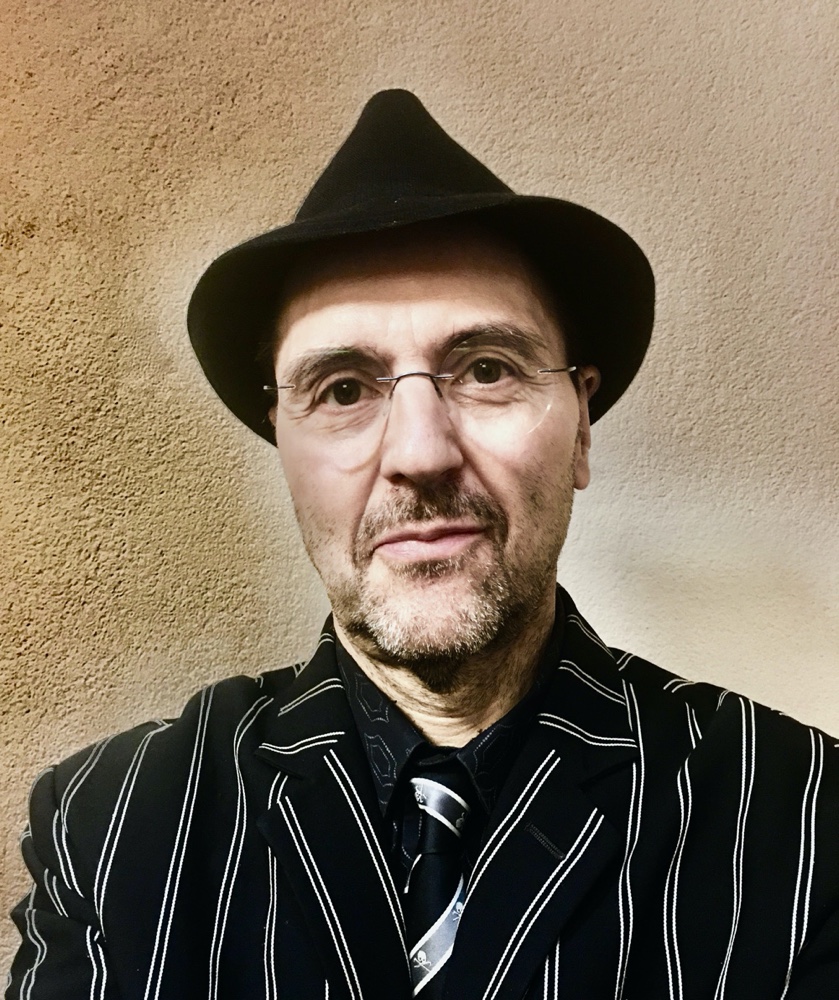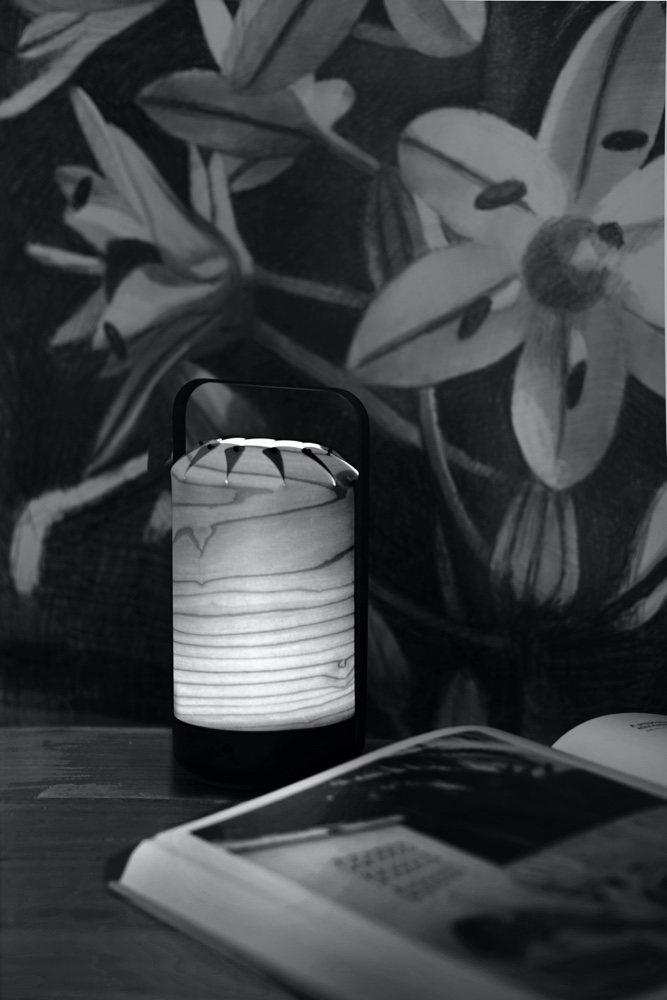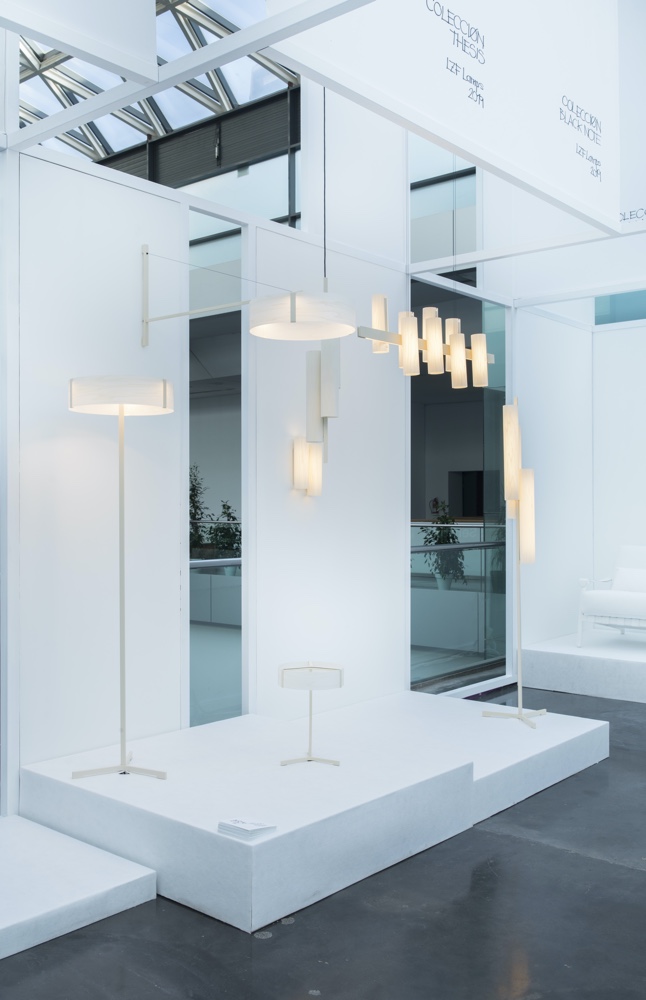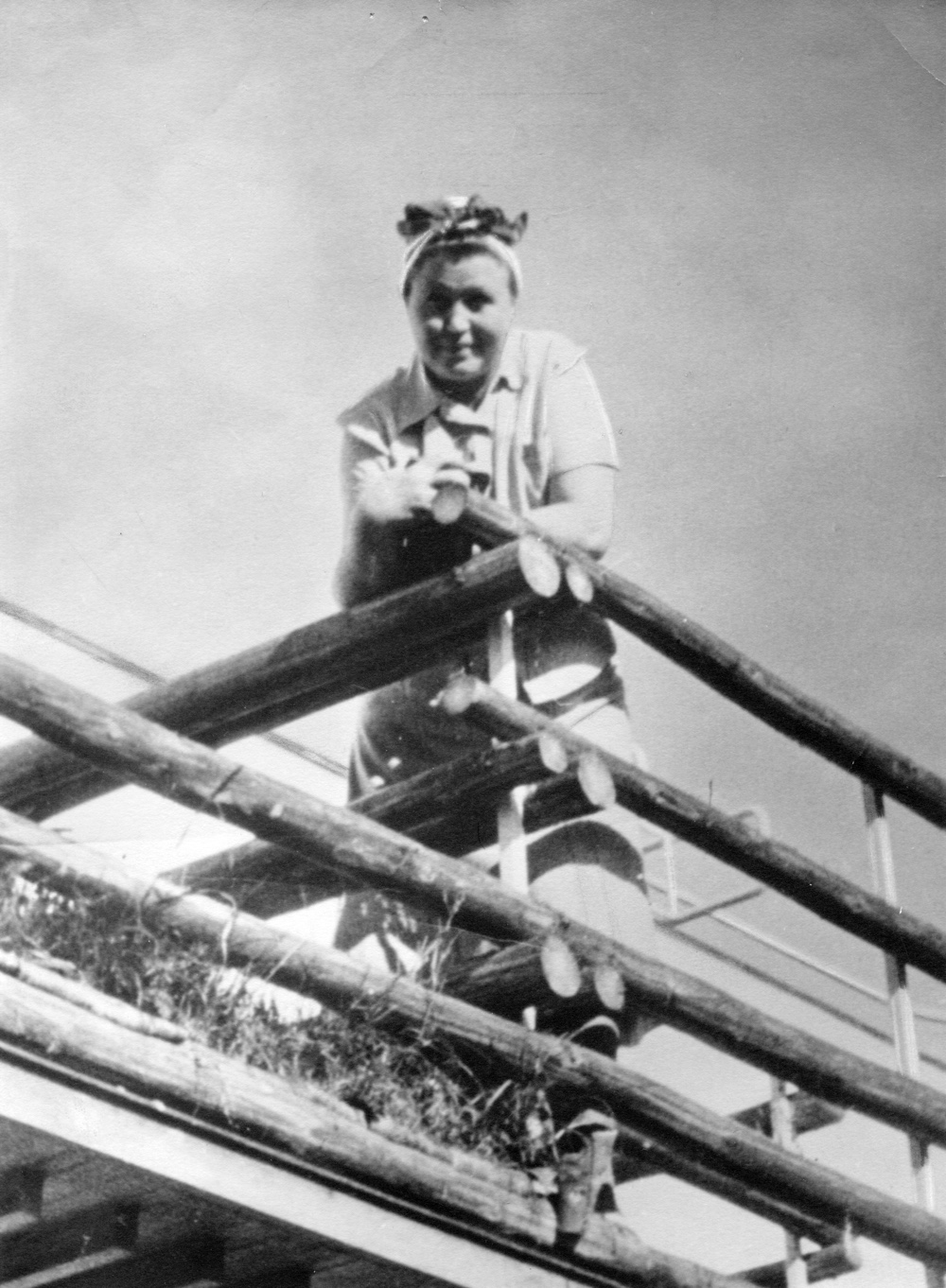In a recent breakfast interview with Ramón Esteve Studio, LZF co-founder Mariví Calvo discusses LZF’s philosophy, design and the project she has most enjoyed.

Mariví Calvo (centre) with Ramón Esteve (right), during a recent breakfast interview at Ramón Esteve Studio. Image © Ramón Esteve Estudio.
Defining the philosophy of LZF, Mariví explains that design and collaboration with creatives and artists from different sectors are key. She believes design is a shared experience and that its application is integral to every part of LZF’s work, from production to trade shows and communication campaigns.
In today’s instantaneous world, where information is always readily available, Mariví does worry about a prevailing state of sameness and misses a sense of originality. Of course LZF is known for its highly original approach to lighting design. In the interview with Ramón Esteve Studio, Mariví provides an insight into some lesser known LZF projects (including Luis Eslava’s ‘Armadillo’) and discusses the process behind the phenomenal Koi, the LZF project she has enjoyed most to date.
Presently, LZF is working with Ramón Esteve on two new lighting collections, one of which includes Black Note. Allied to this, Black Note is a singular space designed by Ramón for LZF at Casa Decor in Madrid. And Ramón will also design LZF’s Euroluce booth at the forthcoming Milan Design Week.
Read the full interview with Mariví Calvo and Ramón Esteve Studio:
How would you define the philosophy of LZF Lamps?
At LZF Lamps, design and collaboration with creatives and artists from different sectors have been key pieces in our philosophy. The design for us becomes a shared experience, in the recognition of a common sensibility. In our philosophy, we view design as a cause, as the main reason behind the processes and the working mechanisms of the company—from production to communication. Our goal is to apply design in all possible ways: in the products we develop, in how we show them at fairs and in the communication campaigns that revolve around our lamps.
Design has become not only a fundamental part of companies and organisations, but also a tool with which to articulate processes that enable a more efficient, competitive, attractive and sustainable world. Today, product design is a complete experience. The expectations of a product cover the entire cycle of your life: from the moment of production and purchase, to the end of the life of the object, and through to its subsequent recycling. At LZF Lamps we are mindful of this and we are committed to a future of innovation and awareness. New processes and new materials are coming.
What would you highlight about the product design landscape in Spain and specifically in Valencia? What would you change?
I would highlight the prolific quarry that has emerged in Spain in recent years, particularly in Valencia. However, I do not think there is Valencian design as such—maybe Spanish design. In our current state of globalisation, we have to think about how to bring design to the wider world.
In terms of what I would change, I believe the sources of inspiration used by many designers and companies are usually the same. Nowadays, it is very easy to access a lot of information instantaneously and I have the impression that everything looks alike. I miss that sense of originality, of my own codes.
Tell us about the project that you have most enjoyed.
Then we should talk about ‘Koi’. Here, the most interesting aspect was the involvement of the whole team, the collaborations that emerged and how they were linked.
In 2008, the designer Luis Eslava gave us a prototype: the ‘Armadillo’. It connected directly with the LZF DNA and its development left us with a new constructive language. The result was the ‘Koi fabric’, an anchoring system that employed the superposition of small sheets of wood in the form of scales. Using this, we wove the atmosphere that accompanied the Armadillo lamp in its presentation in 2009. We applied more than 4,000 pieces of backlit wood veneer and a mirrored floor that enveloped the viewer in an almost unreal weightlessness.
However, because of the Koi fabric’s great complexity, we could not turn it into a product. Instead, we endeavoured to go a step further and find an application that was up to the task. At that time, we were in full campaign mode with ‘Light & Nature’, as illustrated by the artist Emilio Lekuona. With him we had started a bestiary [a descriptive or anecdotal treatise on various kinds of animals], with which we supported the presentations of the novelties. We had just exhibited a giant butterfly to present the Agatha lamp and the Koi fabric. It was the perfect basis from which to start drawing the Koi, where we would apply this fabric.
Throughout the course of the exhibition of the butterfly, Javier Gutierrez, co-founder of Inocuo The Sign, drew an imaginary forest that gradually enveloped her. Javier subsequently got involved in conversations about our next project: ‘Koi’. He suggested the realisation of a short film made in Motion Graphics, where the protagonist—a Koi—would feed on small spherical organisms of light. After thousands of drawings, in 2011 we presented this in Milan and New York, together with Luis Eslava’s Armadillo.
In 2013, we could not resist the temptation to make that movie a reality and we set about preparing for the next phase. Two years passed and in 2015, the wood craftsman Manolo Martin finished an impressive handmade piece that measured more than three and a half meters in length. His wooden skeleton was built using a traditional technique known as vareta—on it we arranged dozens of small pieces of our wood veneer, creating a skin. It was important to adapt the lighting quality and so we hired Vassilis Pappas, a stage designer specialising in cinematographic lighting. This is how our Koi was born.
Following this, we commenced work on the photo sessions and graphic representation. The writer Carlos Grassa Toro, creative consultancy Masquespacio and Rocio Pastor, who also came from the world of cinema, worked with us. The photo studio Cualiti was in charge of giving a new style to the photographs, inspired by the light represented in American artist Edward Hopper’s paintings. We published two stories simultaneously—‘Dreams’ and ‘TellingTales’—with which we won a Red Dot Award in Communication Design in Germany and a Chicago Good Design Award, and achieved international recognition.
We have some spectacular clients who have used the Koi in their work. US chef José Andrés installed the Koi in his two ‘FISH by José Andrés’ restaurants, one at the MGM National Harbor in Maryland and one at at The Cove, a deluxe beachside resort located on Paradise Island in The Bahamas. In Europe, the Koi was installed in the Asian Kitchen & Bar IZAKAYA Munich, in the Mothership of Work co-working space in Helsinki, and in the Hotel Iberostar Costa Adeje, Tenerife.

Koi at IZAKAYA Munich.
During the whole process it has been very exciting to see the involvement of the entire internal LZF team, who have carried out, supervised, coordinated and taken care of every little detail of the process under my direction. And of course the attentive input and overview of Sandro Tothill, who was responsible for transmitting and spreading the project to as many people as possible.
The project in which you would like to work or have worked?
LZF will turn twenty-five in December and we want to face the next twenty-five years with common sense—we’re having a review and posing new challenges both inside and outside the company. So, you catch us at a crucial moment, in a moment of change.
For us it is important to add a new air to the next project and thus we have created a new team, in conjunction with a new collaborative element that we consider very important: working with an architect of recognised prestige, who is willing to support us in reframing the vision for LZF and the product. We could not have had better company with both Pablo Gironés and Pablo Ramiro joining the LZF management team, and subsequently opening the doors to Ramón Esteve.
The time has come to synthesise what has been learned and to open the doors again. We are already underway and Ramón Esteve is completely involved. Let’s wait for Milan, where we hope to surprise you all once more.
And a few short questions
A fear?
To stop dreaming inimpossible projects.
A dream?
Get them to come true.
A challenge to achieve?
Reinvent ourselves and improve every detail.
The best place to find inspiration or good ideas?
In the sea, in dreams, in an empty museum, in any place where there is a good conversation.
Some advice?
Do not stop chasing your dreams—share them, transform them, never give up, always start again. Be demanding.


















